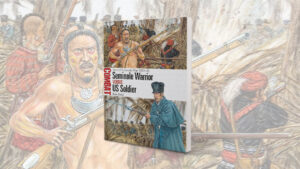
In the military, the word colors has long referred to the flags identifying a nation or military unit. The color guard, a term first recorded in 1705, refers to a group of soldiers given the duty of carrying and protecting the regimental colors. Reporting on Antietam during the Civil War, the New York Tribune said of the 34th New York Infantry, “Half their officers were killed or wounded, their colors shot to pieces, the Color Sergeant killed, every one of the color guard wounded.”
To nail one’s color to the mast referred to displaying the national flag on any warship; lowering the colors signified surrender. To sail under false colors was a common deception in the 16th and 17th centuries. Flying the flag of the enemy or its ally, ships could sail close and show their true colors only just before firing. Both terms are now used metaphorically, the first to mean remaining resolute, the second to signify subterfuge. If a ship won in battle, it returned with flying colors. This term, too, is used metaphorically to indicate a triumph, as in, “Paul passed his exam with flying colors.”
Numerous colors were used to convey a military meaning. Among the oldest is the white flag, a symbol of truce or surrender since Roman times. The historian Livy wrote of a Carthaginian ship garnished with white flags of peace to seek parley. Today it most often signifies surrender. By present-day international conventions, the bearer of a white flag is guaranteed safe conduct and may not be fired on, a custom not always honored.
Since the 18th century, the white feather has symbolized cowardice. It originated in cockfighting, where a white feather in a game bird’s tail indicated inferior breeding. In the military, showing the white feather came to mean running away from combat or one’s duties. Soon after the outbreak of World War I, Baroness Emmuska Orczy of Great Britain formed a group to hand out white feathers to any young man not in uniform.
The color black has mostly negative connotations. In the 1920s Benito Mussolini’s followers wore a black shirt, and fascists came to be called Black Shirts. The SS or Schutzstaffel, the elite Nazi defense squadron, also were called Black Shirts. In the United States this name was sometimes extended to all fascist sympathizers.
In 1920 a force of irregulars was enlisted by the British government to help put down a rebellion in Ireland. Called the Black and Tans for their uniforms’ khaki (tan) coats and black caps, they became notorious for using excessive force, which actually strengthened the Irish resistance. [See “Kick the Bully,” Winter 2013.] Their name continued to come up in subsequent conflicts between Britain and Ireland.
World War I gave us the black market, a name revived in World War II, referring to the illicit sale of rationed items. World War II also gave us blackout, describing Britain’s efforts to cloak in darkness the cities targeted by German nighttime bombing raids. Special blackout shades and curtains were used for this purpose. Similar precautions were taken in the United States after 1941, mainly in coastal cities. Sometimes only a brownout, a partial blackout, was called for. Brownouts were sometimes deliberately invoked in order to save fuel; today, the term describes an inadvertent period of low electricity during a power shortage.
In aeronautics between the world wars, the term black box referred to a small box used to send air traffic control messages. During World War II the term described any experimental equipment painted black to reduce the enemy’s chance of finding it if the plane was shot down. Later the term was transferred to flight recorders in both military and civilian aircraft that supplied in-flight information after a crash. Today the term is a misnomer, since such boxes are usually painted bright orange to make them easier to find.
Black Monday has a far older origin. In 1360, when England’s Edward III was besieging Paris, the Monday after Easter was so frigid that many soldiers and horses died of exposure. From that time the Monday after Easter was called Black Monday. About 1730 the same term was applied to the opening of school in Britain after a long holiday, and it is still so used. The term has since been applied to other dark days of riots, protests, and financial crashes.
Brown appears in only a few military terms. Members of Hitler’s Nazi Party were called Brown Shirts, a name also applied to the pro-Nazi Bund in the United States. To be browned off, meaning “fed up,” became common in World War II. It was adopted from Royal Air Force slang of the late 1930s. To brown nose meant to curry favor from a superior. After the war it entered the civilian vocabulary. Brown shoe has several meanings. Just after World War II it signified a naval aviator, who wore brown shoes. On September 1, 1956, the U.S. Army uniform changed from brown shoes to black, giving rise to the term brown-shoe army, used by younger soldiers to describe older NCOs. Old shoes had to be dyed black and, according to lexicographer Paul Dickson, over the following Labor Day weekend army bases were awash in black gook. Thereafter, the adjective brownshoe came to mean old-fashioned, and by extension being dedicated and having had long service.
Christine Ammer’s American Heritage Dictionary of Idioms was published in a revised, expanded edition in February 2013.





